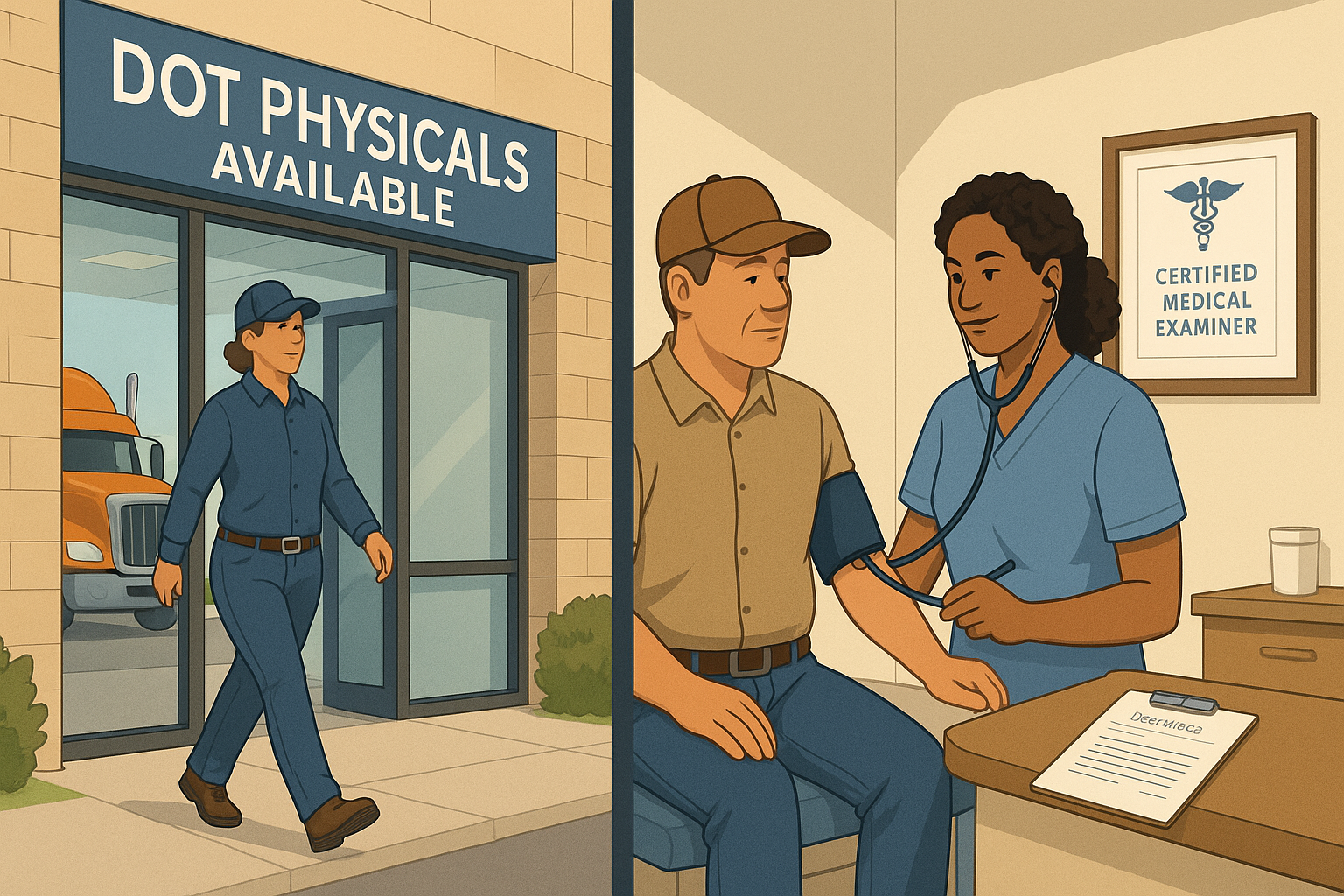
Understanding DOT Physicals: What Every Commercial Driver Needs to Know
If you drive a truck, bus, or commercial vehicle, you’ve probably heard the term “DOT physical” more than once. But what is it really? Why do you need one? And what happens if you don’t pass?
Whether you’re just starting your career in transportation or it’s time for your renewal, this guide breaks down everything you need to know about the Department of Transportation (DOT) physical exam—so you can stay road-ready, legal, and healthy.
What Is a DOT Physical?
A DOT physical is a federally mandated medical exam required for commercial drivers. It’s designed to make sure you’re physically and mentally fit to operate a commercial motor vehicle (CMV) safely.
The exam follows standards set by the Federal Motor Carrier Safety Administration (FMCSA) and must be performed by a Certified Medical Examiner listed in the National Registry.
Who Needs a DOT Physical?
You are required to pass a DOT physical if you:
-
Drive a vehicle that carries more than 8 passengers (for pay) or 15 passengers (not for pay)
-
Drive a vehicle with a gross weight rating over 10,000 pounds
-
Transport hazardous materials
-
Drive interstate for work as a professional trucker or commercial driver
If you fall into any of these categories, DOT physicals aren’t optional—they’re required to maintain your Commercial Driver’s License (CDL).
What to Expect During the Exam
At Airline Care Clinic, a certified examiner will walk you through the following:
✅ Health History Review
You’ll answer questions about:
-
Medications
-
Surgeries
-
Chronic conditions (like diabetes, high blood pressure, or sleep apnea)
-
Substance use
✅ Physical Exam
The provider will check:
-
Blood pressure and heart rate
-
Vision and hearing
-
Reflexes, balance, and movement
-
Breathing, lung function, and overall physical fitness
-
Urine test (checks for glucose, protein, and signs of health issues—not for drugs)
✅ Additional Requirements
You may need extra documentation if you:
-
Use a CPAP machine
-
Take insulin
-
Have a medical condition that could affect driving
How Long Does a DOT Physical Last?
-
2 years if you pass with no concerns
-
1 year or less if you have a condition that needs monitoring (like controlled high blood pressure or vision problems)
What If You Don’t Pass?
Failing doesn’t mean you lose your CDL right away. In many cases, drivers can return after getting a condition under control. You may also be issued a temporary medical card that gives you time to follow up.
Why DOT Physicals Matter
DOT physicals aren’t just about checking boxes—they’re about keeping you and everyone else on the road safe. Fatigue, vision issues, unmanaged diabetes, or high blood pressure can all lead to serious accidents if left unchecked.
By taking your health seriously, you protect your:
-
Livelihood
-
License
-
Safety
-
Fellow drivers
Tips to Prepare:
-
Get a good night’s sleep
-
Avoid caffeine and smoking before your visit (can raise blood pressure)
-
Bring your glasses, hearing aids, and a list of medications
-
If you’ve had surgery or been treated for a condition, bring documentation
When and Where to Go:
Airline Care Clinic offers DOT physicals by appointment on Mondays and Thursdays.
Walk-ins are welcome on Tuesdays from 7:30 a.m. to 3:30 p.m.
Our certified examiners make the process simple and stress-free, with clear guidance every step of the way.
Why Drivers Choose Airline Care Clinic:
-
Certified by the National Registry
-
Fast, professional exams
-
Same-day forms and results
-
Affordable pricing for cash-pay visits
-
Friendly, respectful service every time
Final Thoughts:
Driving commercially is a big responsibility—and so is taking care of your health. A DOT physical may feel routine, but it’s an important checkpoint that helps keep you in the driver’s seat for years to come.
Don’t wait until your card expires. Get it done early, stay compliant, and stay on the road.
continue reading

